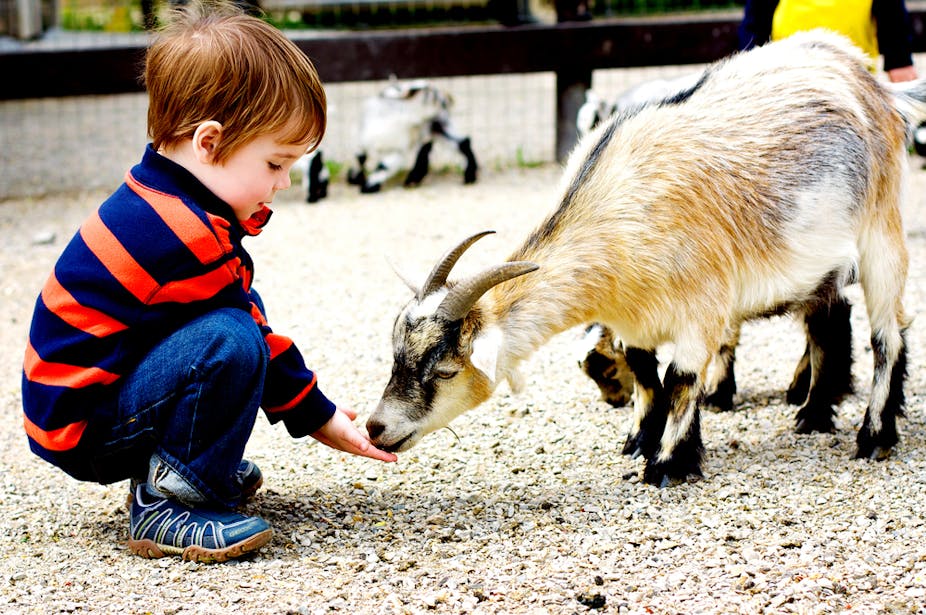There has been a small outbreak of E. coli infection in Brisbane. Three children and one adult who attended the Brisbane Royal Agricultural Show, also known as Ekka, tested positive for the bacterial infection last week.
The children were apparently infected through direct contact with animals at the petting zoo. Another 13 cases have since come forward.
The Queensland Health Department today confirmed eight cases of the Shiga toxin producing E.coli strain (STEC), with the age of those infected ranging from six to 42. Another nine potential cases are waiting for confirmation.
Types of E.coli
E.coli’s real name is Escherichia coli, but the pronunciation challenge means that the full name is almost never used.
It is a bacterium commonly found in the intestines of humans and animals, where it often does no harm. However, some E. coli types are the common cause of diarrhoea around the world, while others can cause serious disease.
STEC is highly infectious and can cause very serious illness. In rare cases, the infection can develop into a haemolytic-uraemic syndrome, which damages the kidneys and may be fatal.
In the past, the STEC strains were often referred to as the enterohaemorrhagic strains of E. coli (EHEC).
Transmission and symptoms
Animals, mainly cattle, are the main reservoir of E. coli infection in Australia, but human-to-human transmission does occur.
The infection may be passed from direct contact with animals (like the Brisbane outbreak) or from contamination of milk or food products with animal faeces.
The incubation period for the STEC strain is relatively long compared to other strains of E. coli; symptoms may appear from three to 10 days after infection.
Children and the elderly are particularly vulnerable to the bacterium, and secondary transmission of the infection to family members and friends is common.
The characteristic feature of STEC infection is bloody diarrhoea, often associated with abdominal cramps. Fever may happen but is not a prominent sign.
Treatment and outbreaks
The infected person needs to be isolated with strict infection control procedures because the infective dose is very small. The main aim of treatment is to replace fluid and electrolyte loss.
The value of antibiotic treatment for STEC has not been proven, and for those who have come in contact with an infected person, there is no specific treatment. However, all contacts should be counselled on exercising greater care in personal hygiene, particularly handwashing.
In 1995, there was an outbreak in Adelaide due to contaminated metwurst sausage, which resulted in the deaths of two children from kidney failure.
STEC outbreaks are not common in Australia, though it’s likely that small outbreaks occur from time to time, which go unrecognised.
The Queensland Health Department has been quick to react to the Brisbane outbreak and says it has it under control.
They have also emphasised the importance of handwashing.
Prevention
The prevention of E. coli is all about personal hygiene. The most important factor is handwashing: hands should be washed with soap after defaecation and before preparing or serving food.
At a national level, the most important control measures for E. coli involve cattle abattoir hygiene - particularly the prevention of meat contamination with intestinal content, the subsequent processing of beef products, and the cooking of beef.
Minced beef, in particular, must be fully cooked, and milk and dairy products must be pasteurised.

